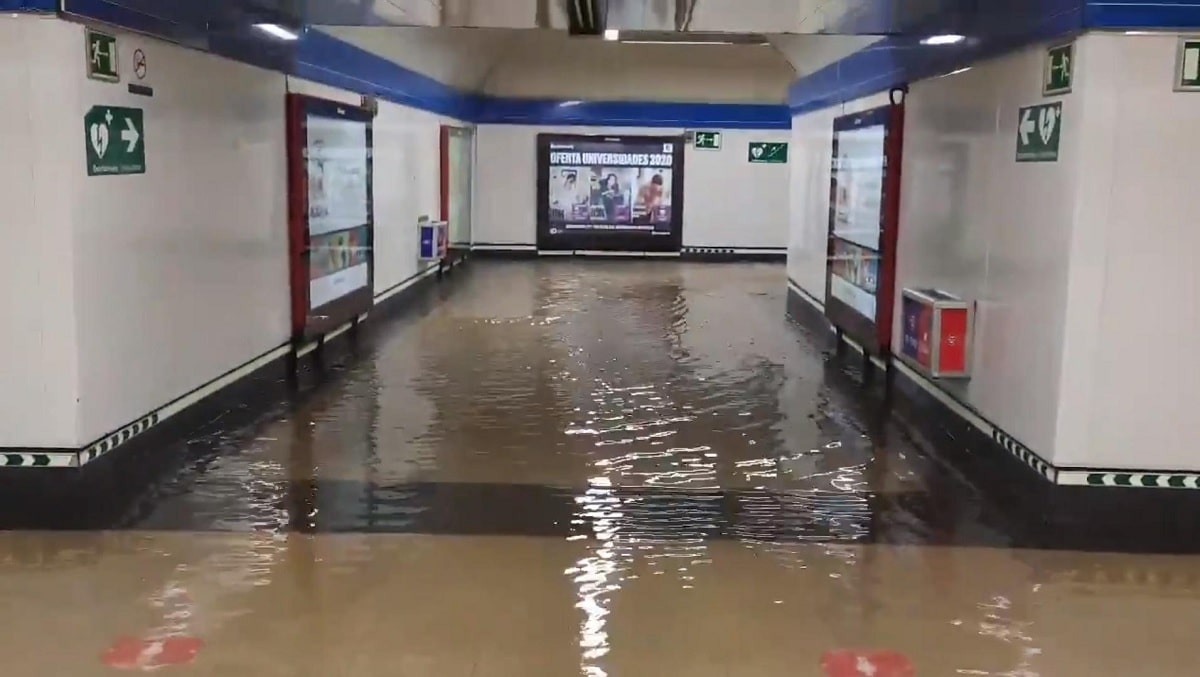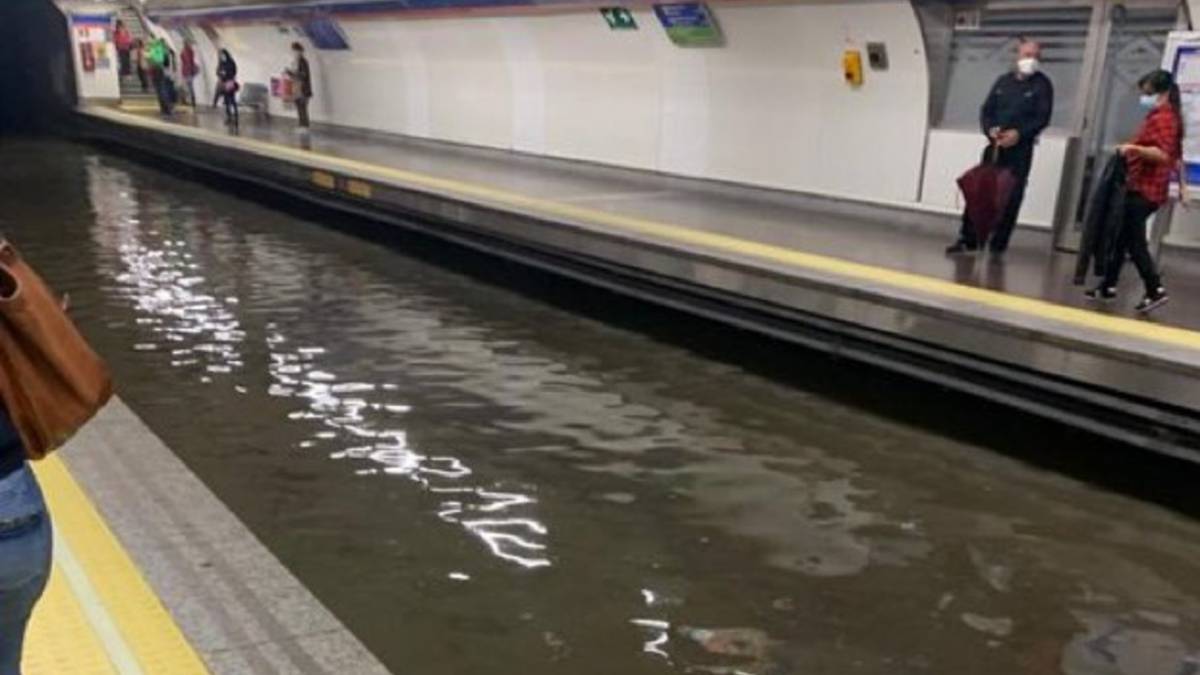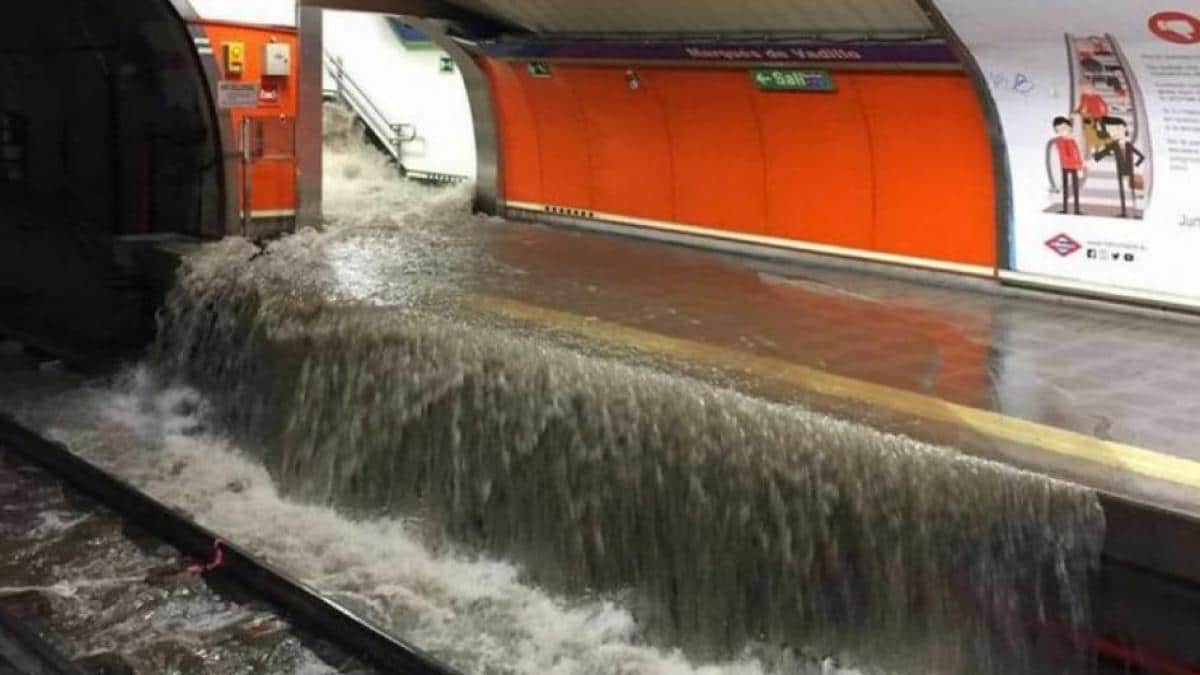
Continuous heavy rains can cause severe flooding in cities. Sewage systems have a water absorption and filtration capacity that is saturated by the amount of water that falls in a few minutes. Therefore, floods usually occur in areas attacked by heavy rains. The flooding of the Madrid metro They gave a lot to talk about, since they were caused by a DANA. The consequences of this were disastrous.
In this article we are going to remember everything that happened with the flooding of the Madrid metro and what repercussions they had.
Situation in Madrid

With the general chaos in the traffic, the houses flooded and the closure of sections of the metro due to the heavy rains this morning, Madrid could not start the summer in a worse way. The orange warning for rain and storms (important risk) was maintained for the Metropolitan and Henares regions, while the yellow warning (risk) for the rest of the region.
Faced with this situation, the Community of Madrid launched the Special Program for the Protection of Citizens against the Risk of Floods (InunCAM) in the face of the state of alarm. On September 1, the weather conditions were rainy throughout Spain: there were storms and storm warnings in almost all regions, and five communities were on orange alert.
According to the Madrid 112 Emergency report, the Madrid 112 Emergency Service processed a total of 237 documents related to storms between 00:00 and 07:00. The areas with the most warnings in the region were: Alpedrete, Valdemoro, Parla, Fuenlabrada, Rivas-Vaciamadrid and Madrid. The Firefighters of the Community of Madrid had to carry out 50 interventions, all of them related to flooding in homes and puddles on roads. However, none of them were particularly serious.
For its part, the firefighters of the capital city council carried out 58 outings related to the storm, though none seriously. His main problems were swimming pools on public roads, houses with leaks and tree branches that are removed because there are also moments of wind.
Flooding in the Madrid metro

Heavy rains also affected several Madrid metro lines. Line 5 between Pirámides and Oporto stations and line 9 between Colombia and Plaza de Castilla remained closed in the early hours, but traffic is expected to normalize in the next few hours. On the other hand, power outages were corrected at several stations on Line 1 and at the Rivas Vaciamadrid Station (Line 9).
The storm created a large pool of water in the capital and emergency services cut tunnels in Plaza Carlos V and Santa María de la Cabeza in the Dominican Republic, resulting in backed up water traffic that had been remedied with the reopening of all the tunnels.
On lines C3 and C4 of Cercanías and Sol, some trains had to be diverted through the Recoletos tunnel due to delays of 5 to 10 minutes due to water in the tunnel. Road traffic on the surface was also affected. The Municipal Police had to cut sections of various roads due to stagnant water, which affected the EMT bus service. The main problem areas were Manuel Becerra, Princesa, Plaza de España, Genoa and Alberto Aguilera.
Intense showers in Madrid between 8.30:10.00 and 17:19 a.m. left 4 to 17,3 liters of water per square meter in the metropolitan area. According to Rubén del Campo, spokesman for the National Meteorological Service (Aemet), the Retiro Park collected 17,8 liters per square meter, XNUMX liters at the airport and XNUMX liters at the university location.
The showers were sometimes very intense: in the Parque del Retiro and Ciudad Universitaria they reached 6,3 liters in just ten minutes. Although "it was an intense downpour, it was not a record," del Campo clarified, recalling that the worst storm occurred on May 31 with about 17 liters per square meter in 10 minutes.
Madrid metro flood warnings

The first outage notice went on the air after 9:00. “The L2 loop between Ópera and Quevedo has been interrupted in both directions due to an accident at the facility,” Metro tweeted. Later, it was reported that line 4 between Lista and Goya was for the same reason. any address. Metro also reported that the trains did not stop at Noviciado (L2), García Noblejas (L7), Barrio de la Concepción (L7) and Plaza de España (L10 and L3) due to "an incident in the facilities". At that time, the two-way traffic on the L10 between Tribunal and Batán was also interrupted.
In Principe Pío, a Line 10 train remained stopped without passengers during the interruption of the line. The platform area is a bit crowded as it is a direct transportation hub between Line 6 and Line 10. Some were asking the security guards and Metro staff the fastest way to reach your destination by alternative routes.
Shortly after 11.30:10, about twenty passengers who wanted to access line XNUMX at the Plaza de España stop patiently waited for the guards to let them through. It was the last line that needed to be reset. After a radio warning, the seals were removed from the escalators and the situation returned to normal.
flood panorama
With climate change, floods are becoming more frequent due to the greater existence of intense storms. It must be borne in mind that each population must be prepared for these scenarios to minimize the damage that can be caused. It is the obligation of the municipalities to put letters in the matter to have plans to reduce risks and damage in the face of floods so that something like the flooding of the Madrid metro does not happen. Let's just hope that the storms caused by DANA are not so damaging in order to reduce the costs and the damage that occurs in public spaces and homes.
I hope that with this information you can learn more about the flooding of the Madrid metro, its consequences and what was done about it.